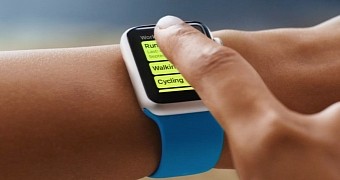Investment banks make it their business to track down Apple’s component suppliers in order to give investors valuable trading advice. For instance, when Samsung scores a new order of application processors, you know their stock will gain a few points on the millions of units churned out every quarter.
This year things aren’t any different. With the Apple Watch on the way, J.P. Morgan has scrambled to find the suppliers of the key components making up the wearable, including the processor, and the display.
“EMS (currently 100% done by Quanta, 13% revenue exposure). Samsung Electronics could produce the 32 bit AP (“S1”) at 28nm in, and SiP (System-in-Package) module could be done by ASE (high single digit % revenue exposure) while chip package could be Amkor and STATS,” writes the company.
Display is based on LG’s P-OLED technology
LG Display is reportedly the sole vendor for P-OLED displays for the Apple Watch, according to J.P. Morgan. It forecasts a 25% rise of the Korean company’s stock price.
Polymer-OLEDs, sometimes written PLED, are OLED screens made from polymer materials, typically involving large molecules. The opposite is, of course, small molecules (SM-OLED).
Most of the OLED displays on the market today are made using small-molecule technology, whereas P-OLEDs suffer from lower lifetime and are less efficient, according to oled-info.com. However, P-OLEDs are easier to print out, making it the technology of choice for vendors with a focus on large panels and yield rates.
Considering that the Apple Watch probably won’t have a life span greater than 4 years, P-OLED technology shouldn’t pose a problem.
The wearable is expected to roll out this spring, sometime between March and April. Employee training is well underway, according to people who are familiar with the situation. Apple plans to house the more expensive gold version of the Apple Watch in safes inside its flagship stores.

 14 DAY TRIAL //
14 DAY TRIAL //